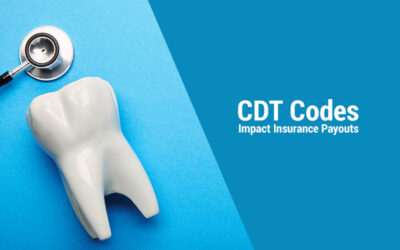Navigating the complexities of insurance coverage and medical billing for pediatric dental services can be challenging for dental physicians. The intricacies of insurance policies, claims processing, claim denials, coding errors, eligibility missteps and billing services can disrupt operations. Leveraging expert help for handling insurance verification in pediatric dental billing can help enhance efficiency and ensure that families can access quality dental care for their children. In this post, we discuss the details of insurance coverage and medical billing specifically related to pediatric dental revenue cycle management.
Why Pediatric Dental Insurance Coverage Matters
Depending on the type of insurance plans patients have, Insurance reimbursement for pediatric dental care varies widely. Therefore, it is important to carefully review the insurance policy to understand the type and specific coverage. Typically, pediatric dental services are covered under a patient’s medical insurance plan, but coverage can vary depending on the insurer and the plan. Insurance plans often include pediatric dental benefits, covering essential preventative services like cleanings, fluoride treatments and check-ups and other restorative procedures like fillings, extractions, orthodontic evaluations and emergency care.
That said, you may be able to get medical insurance to cover typically non-covered procedures if you can successfully prove medical necessity. Dental insurance benefit checks help bridge this gap by confirming a patient’s coverage details before starting the treatment and ensuring the dental practice is properly reimbursed. This process involves checking a patient’s insurance plan for coverage details, annual limits and co-pays and specific exclusions or waiting periods. By verifying eligibility before treatment, dental practices can provide transparent cost estimates, minimizing financial surprises for families.
Simplify insurance authorization with our support!
Here are some key points to remember when billing for pediatric dental care-
- In-Network vs. Out-of-Network Providers: Often, insurance plans have a wide network of preferred providers, including dentists and dental clinics. If your dental practice is considered an in-network provider, this usually results in lower out-of-pocket costs for your patients. On the other hand, if your practice is out-of-network, you may still be able to bill medical insurance, but at a higher cost or with certain limitations. In short, it is important to have your patients check with their insurance provider to understand the specifics.
- Coverage for Preventive vs. Restorative Services: Typically, medical insurance plans prioritize medically necessary treatments. However, it is possible to get them to cover preventive services such as regular check-ups, cleanings, and x-rays as well. These services are important for maintaining your pediatric patient’s dental health and are often covered at a higher percentage or even fully covered when billed correctly. Restorative dental procedures, such as fillings or orthodontic treatments, may have different coverage levels or require additional documentation for approval. This includes proving medical necessity for the treatment before medical insurance will pay.
- Waiting Periods and Pre-authorization: Some medical insurance plans may have waiting periods before certain services are covered. For instance, orthodontic treatments might have a waiting period of six months or more. In addition, certain procedures may require pre-authorization from the insurance provider before they can be performed. Having a clear understanding about these waiting periods and pre-authorization requirements helps avoid unexpected denials.
Medical Billing for Pediatric Dental Services
Accurate medical billing for pediatric dental care relies heavily on accurate dental coding for pediatric procedures. The American Dental Association (ADA) provides a comprehensive list of codes for dental procedures that can be used in medical billing. Using the correct codes is important to ensure that the claims are processed accurately and payments are received for services rendered. Understanding the process of submitting claims is another important aspect of pediatric dental medical billing. As each insurer may have different requirements for submitting claims, it is important to familiarize yourself with the process for each insurer. Some insurers may require medical necessity documentation for dental claims.
Here are some key things to consider when billing for pediatric dental services:
- CDT Codes vs. Medical Codes: CDT (Current Dental Terminology) codes are specific to dental procedures, while medical codes, such as CPT (Current Procedural Terminology) codes, are used for medical services. Some dental procedures, may require medical billing using specific medical codes, such as CPT codes for dental trauma treatment or oral surgery. Medical-dental cross coding involves submitting dental procedures to a patient’s medical plan rather than their dental insurance, when the dental work is medically necessary.
- Coordination of Benefits: Understanding the coordination of benefits is important, if your pediatric patient has both dental and medical insurance coverage. Typically, dental insurance is for dental services, while medical insurance is primarily for medical services. However, certain situations may arise where both insurances can be utilized to maximize coverage. Consulting with both insurance providers can help clarify the coordination of benefits for the patient’s needs. In certain situations, medical insurance will provide full coverage, leaving dental benefits available for your patients and their families for other non-covered procedures.
- Documentation and Claim Submission: Proper documentation is important for successful claim submission. Make sure that all the required documents, including x-rays, treatment plans, and medical necessity documentation, are accurately prepared and submitted to the insurance provider. Incomplete or missing documentation may lead to delays or denials in claims.
Apart from having a clear understanding about medical insurance coverage for pediatric dental care and billing, it is important to communicate effectively with your patients and their families. Patients may have questions about their coverage or the cost of procedures, and you must provide the necessary information. This clear communication helps patients understand their options for paying for dental services, such as financing or payment plans, or choosing between dental billing and medical billing.
Medical billing and insurance coverage for pediatric dental services can be simplified with the right strategies and support. For dental practices, outsourcing dental insurance verification for accuracy is a key step toward operational excellence. This not only helps alleviate administrative burdens but also fosters better financial outcomes and patient trust. By partnering with an experienced dental billing company, practices can focus on ensuring every child receives the quality dental care they deserve while reducing medical claim denials for pediatric dentistry.




